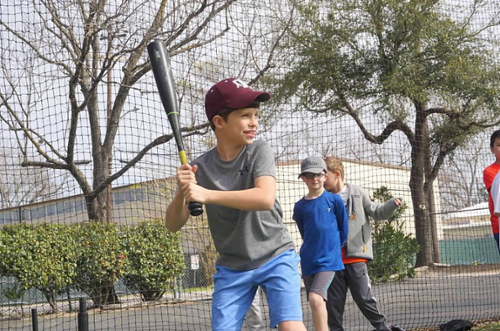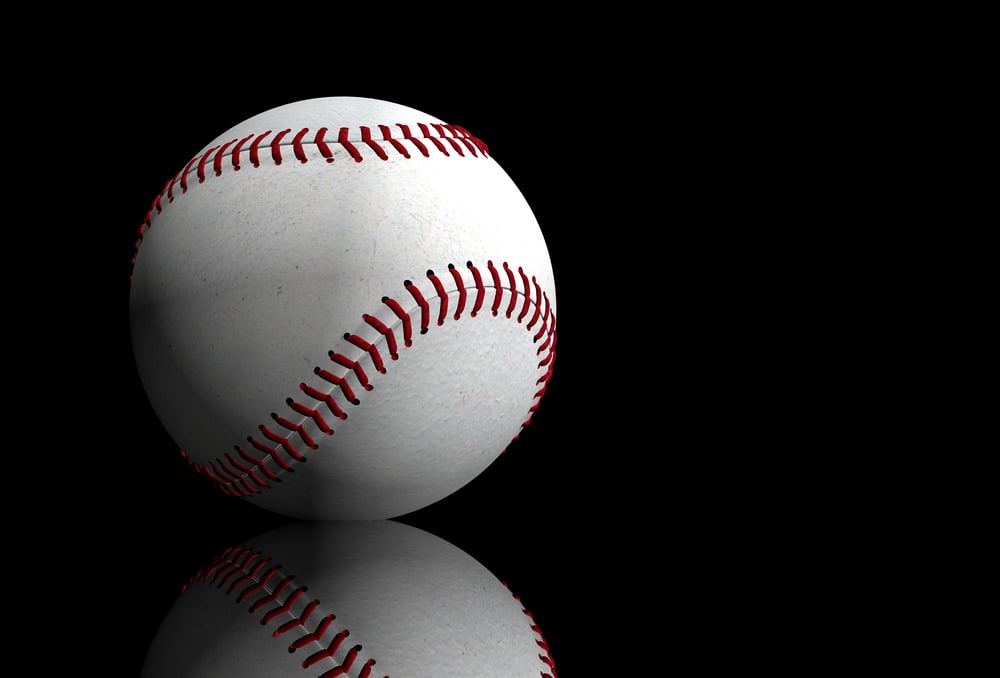“Baseball is 90 percent mental and the other half is physical.” - Yogi Berra
Baseball, America's pastime, is a sport that demands both physical prowess and mental fortitude. Whether you're a Little Leaguer just starting out or a seasoned high school player with dreams of the big leagues, consistent training and the right equipment are vital for reaching your full potential on the diamond. In this comprehensive guide, we'll cover essential baseball training tips, discuss the equipment you need to succeed, and even decode some common baseball lingo.
1. Baseball Training: Key Focus Areas for Improvement
To elevate your game, it's essential to focus your training efforts on key areas:
- Hitting: Improving your swing mechanics, power, and accuracy requires dedication and practice. Work on proper grip, stance, and weight transfer. Utilize drills like tee work, soft toss, and batting practice to refine your technique.
- Pitching: Enhancing velocity, control, and pitch variety are crucial for any aspiring pitcher. Focus on proper mechanics, arm strength, and developing a diverse arsenal of pitches. Incorporate drills like long toss, bullpen sessions, and target practice.
- Fielding: Agility, reaction time, and throwing accuracy are essential for any position player. Work on footwork drills, glove work, and throwing mechanics. Practice different fielding scenarios to improve your instincts and decision-making.
- Base running: Speed and efficiency on the base paths can make a significant difference in a game. Practice your sprints, leads, and slides. Learn the art of base stealing and smart base running decisions.
- Strength and Conditioning: Building baseball-specific strength and endurance will improve your overall performance. Incorporate exercises that target core strength, leg power, and upper body explosiveness.
Remember, consistency is key! Regular practice and a well-rounded training program will help you develop the skills you need to excel on the field.
2. Essential Baseball Training Equipment
Having the right gear is essential for both safety and maximizing your training efforts. Here's a breakdown of some must-have baseball training equipment:
-
Gloves:
- Fielding glove: Choose a glove that fits your hand properly and is appropriate for your position. Infielders typically use smaller gloves for quicker transfers, while outfielders need larger gloves for a wider reach.
- Batting gloves: These provide a better grip on the bat and help prevent blisters.
- Catcher's mitt: A specialized glove designed for catching fastballs and controlling pitches.
-
Bats:
- Wood bat: Used in professional and some collegiate leagues. Offers a traditional feel and helps develop proper hitting mechanics.
- Aluminum bat: Commonly used in youth and amateur leagues. Offers a larger sweet spot and increased power.
- Training bat: Heavier or lighter than a standard bat, used for specific drills to improve strength and swing speed.
-
Balls:
- Practice balls: Durable and affordable balls for everyday training.
- Game balls: Higher quality balls used for official games.
- Weighted balls: Used for specific drills to improve arm strength and throwing velocity.
-
Training aids:
- Batting tee: Helps develop proper swing mechanics and hand-eye coordination.
- Pitching net: Provides a safe and convenient target for practicing pitching.
- Weighted balls: Used for throwing drills to improve arm strength and velocity.
- Agility ladder: Improves footwork, coordination, and quickness.
- Resistance bands: Enhance strength and flexibility for various baseball movements.
-
Protective gear:
- Helmet: Protects the head from impact while batting and base running.
- Cleats: Provide traction and stability on the field.
- Mouthguard: Protects teeth and gums from injury.
- Protective cup: Protects the groin area for male players.
Investing in quality baseball training equipment will enhance your performance and protect you from injuries. Remember, the right gear can make all the difference in your training and overall game.
3. Decoding Baseball Lingo: What Does "R" Mean and Other Key Terms
Baseball, like any sport, has its own unique language filled with abbreviations and statistics. Understanding these terms is essential for following the game and analyzing player performance. Here's a breakdown of some common baseball lingo:
-
Basic Stats
- R: Runs - The number of times a player crosses home plate to score a point for their team.
- H: Hits - The number of times a batter reaches base safely due to a batted ball.
- AB: At-Bats - The number of times a batter steps up to the plate, excluding walks and sacrifices.
- AVG: Batting Average - Calculated by dividing Hits (H) by At-Bats (AB), representing a player's hitting success rate.
- HR: Home Runs - The number of times a batter hits a ball out of the park, resulting in an automatic run for themselves and any runners on base.
- RBI: Runs Batted In - The number of runs scored due to a batter's hit, walk, or sacrifice.
- SB: Stolen Bases - The number of times a runner successfully advances to the next base without the aid of a hit or error.
-
Pitching Stats
- W: Wins - The number of games a pitcher is credited with winning when they are the pitcher of record when their team takes the lead for good.
- L: Losses - The number of games a pitcher is charged with losing when they are the pitcher of record when the opposing team takes the lead for good.
- ERA: Earned Run Average - The average number of earned runs a pitcher allows per nine innings pitched. A lower ERA indicates better pitching performance.
- SO: Strikeouts - The number of batters a pitcher strikes out, typically by throwing three strikes.
- BB: Walks (or Bases on Balls) - The number of times a pitcher allows a batter to reach first base by throwing four balls outside the strike zone.
- WHIP: Walks plus Hits per Inning Pitched - A measure of how many baserunners a pitcher allows per inning. A lower WHIP is generally better.
-
Fielding Stats
- PO: Putouts - The number of times a fielder makes the final out on a play, usually by catching a fly ball or tagging a runner.
- A: Assists - The number of times a fielder helps make an out, such as throwing the ball to another fielder who records the out.
- E: Errors - The number of times a fielder's mistake allows a batter to reach base or a runner to advance.
- FPCT: Fielding Percentage - Calculated by dividing (Putouts + Assists) by (Putouts + Assists + Errors), representing a player's fielding success rate.
Familiarizing yourself with these key terms will enhance your understanding and enjoyment of baseball, whether you're watching a game or discussing stats with fellow fans.
4. Baseball Injuries: Prevention and Recovery
Baseball, while exhilarating, can also be physically demanding, putting players at risk for various injuries. Understanding common baseball-related injuries and taking preventive measures is crucial for staying healthy and on the field.
-
Common Baseball Injuries:
-
Overuse injuries: These result from repetitive motions and stress on specific body parts. Common overuse injuries in baseball include:
- Shoulder and elbow injuries: Rotator cuff tears, tendonitis, and UCL (ulnar collateral ligament) injuries in pitchers.
- Wrist and hand injuries: Tendonitis, carpal tunnel syndrome, and fractures from repetitive gripping and swinging.
- Lower back pain: Can arise from poor mechanics, overuse, or muscle imbalances.
-
Acute injuries: These occur suddenly, often due to a specific incident or impact. Some common acute injuries in baseball are:
- Sprains and strains: Ligament or muscle injuries caused by overstretching or tearing.
- Fractures: Broken bones, often occurring in the hands, wrists, or ankles due to falls or collisions.
- Concussions: Head injuries resulting from impacts, often during collisions or when getting hit by a ball.
-
-
Prevention Strategies:
- Proper warm-up and cool-down: Always take time to prepare your body before activity and cool down afterward to reduce muscle soreness and injury risk.
- Strength and conditioning: Focus on exercises that improve core strength, flexibility, and overall fitness.
- Correct mechanics: Learn and practice proper throwing, hitting, and fielding techniques to minimize stress on your body.
- Rest and recovery: Adequate rest is essential for muscle repair and injury prevention. Avoid overtraining and listen to your body's signals.
- Protective gear: Wear appropriate safety equipment, including helmets, batting gloves, and cleats.
-
Recovery Tips:
- Rest, Ice, Compression, Elevation (RICE): This is a standard first-aid approach for many acute injuries.
- Physical therapy: Consult a physical therapist for personalized rehabilitation exercises and guidance.
- Pain management: Over-the-counter pain relievers or prescription medications may be helpful for managing discomfort, but consult your doctor first.
- Gradual return to play: Don't rush back to the field too soon. Follow your healthcare provider's advice for a safe and effective return to baseball activities.
Remember, prioritizing injury prevention and seeking professional medical advice when needed are crucial for maintaining your health and enjoying a long and successful baseball career.
5. Baseball Spring Training: Getting Ready for the Season
Spring Training marks the exciting transition from the offseason to the start of the regular baseball season. It's a time of renewal, preparation, and anticipation for players, coaches, and fans alike.
-
Purpose and Structure:
-
Spring Training serves multiple purposes:
- Player Evaluation and Roster Decisions: Coaches assess player performance to finalize the team's roster for the upcoming season. New players compete for spots, while veterans work to maintain their positions.
- Building Team Chemistry: Players and coaches spend weeks together, fostering camaraderie and developing a sense of unity.
- Fine-tuning Skills and Strategies: Players refine their mechanics, work on new pitches or batting approaches, and practice defensive strategies.
- Preparing for the Regular Season: The intensity gradually increases as Spring Training progresses, with exhibition games simulating real game situations.
-
Spring Training typically lasts about six weeks, starting in mid-February and ending in late March. Teams hold practices and scrimmages at their Spring Training facilities, often located in warm-weather states like Florida and Arizona.
-
The Excitement of Spring Training:
-
Spring Training is a special time for fans as well. It's an opportunity to:
- Watch their favorite players up close: Fans can attend open practices and interact with players in a more relaxed setting.
- Get a glimpse of the future stars: Spring Training provides a chance to see promising prospects and new acquisitions in action.
- Enjoy the warm weather and baseball atmosphere: The sunny skies and relaxed pace of Spring Training games create a fun and festive environment.
-
Looking Ahead to 2025:
-
While the 2024 season is still underway, fans are already looking forward to Spring Training 2025. It's a time to renew hope and excitement for the upcoming season, as teams begin their quest for a championship.
Whether you're a player, coach, or fan, Spring Training holds a special place in the hearts of baseball enthusiasts. It's a time of preparation, anticipation, and the promise of a new season filled with thrilling moments and unforgettable memories.
6. Elite Baseball Training: Taking Your Skills to the Next Level
Once you've mastered the fundamentals and built a solid foundation, it's time to explore advanced training techniques and resources to take your baseball skills to the next level. Elite baseball training focuses on refining your abilities, maximizing your potential, and gaining a competitive edge.
- Specialized Camps and Clinics:
These intensive programs offer expert instruction, advanced drills, and competitive scrimmages designed to push your limits and accelerate your development.
Look for camps and clinics led by experienced coaches and former professional players who can provide valuable insights and personalized feedback.
Consider attending camps that specialize in your specific position or skill set, such as pitching, hitting, or catching. - Private Coaching and Instruction:
Working one-on-one with a qualified coach can provide individualized attention and tailored training plans to address your specific needs and goals.
A private coach can help you identify areas for improvement, correct any flaws in your mechanics, and provide expert guidance on advanced techniques. - Mental Performance Training:
The mental game is just as important as the physical game in baseball. Mental performance training can help you develop focus, confidence, and resilience under pressure.
Techniques like visualization, mindfulness, and goal setting can enhance your mental toughness and help you perform at your best when it matters most. - Nutrition and Recovery Strategies:
Fueling your body with the right nutrients and prioritizing recovery are crucial for maximizing your training efforts and preventing injuries.
Consult a registered dietitian or sports nutritionist to create a personalized meal plan that supports your training goals and energy needs.
Incorporate recovery techniques like foam rolling, stretching, and adequate sleep to help your body repair and rebuild after intense workouts. - Technology and Data Analytics:
The use of technology and data analytics is becoming increasingly prevalent in baseball training.
Video analysis, wearable sensors, and advanced metrics can provide valuable insights into your performance, allowing you to identify areas for improvement and track your progress over time.
Remember, elite baseball training requires dedication, discipline, and a willingness to push beyond your comfort zone. By seeking out advanced training resources and adopting a holistic approach to your development, you can elevate your game to new heights and achieve your full potential on the diamond.
7. "Baseball Training Near Me": Finding the Right Resources
While online resources and self-guided practice are valuable, there's nothing quite like hands-on instruction and training in a supportive environment. Luckily, there are various avenues to explore when searching for "baseball training near me."
- Baseball Academies and Training Facilities:
These dedicated facilities offer comprehensive training programs, experienced coaches, and state-of-the-art equipment.
Many academies cater to players of all ages and skill levels, offering group classes, private lessons, and specialized clinics.
Research local academies to find one that aligns with your goals and budget. - Youth Leagues and Travel Teams:
Participating in organized leagues and travel teams provides opportunities for regular practice, game experience, and skill development.
These programs often have dedicated coaches who can offer guidance and support.
Consider joining a team that matches your age and skill level to ensure a challenging and rewarding experience. - High School and College Programs:
If you're a high school or college student, take advantage of your school's baseball program.
These programs offer structured training, competitive games, and access to experienced coaches and facilities.
Participating in school baseball can help you improve your skills, gain exposure to college recruiters, and potentially earn scholarships. - Online Training Resources and Videos:
Supplement your in-person training with online resources and instructional videos.
Many professional players and coaches share their expertise through online platforms, offering drills, tips, and insights into their training routines.
Utilize these resources to learn new techniques, refine your skills, and stay motivated during the offseason.
Remember:
- Ask for recommendations: Talk to coaches, teammates, and other baseball enthusiasts in your community for recommendations on local training options.
- Visit facilities and observe practices: Get a feel for the coaching style, atmosphere, and overall program before committing to a specific facility or team.
- Consider your goals and budget: Determine your priorities and financial constraints when choosing a training option.
- Don't be afraid to try different programs: Explore various opportunities to find the best fit for your individual needs and preferences.
By actively seeking out "baseball training near me" and utilizing the available resources, you can continue to elevate your game, achieve your goals, and experience the joy of playing baseball at your full potential.
Call to Action
Remember, the journey to baseball greatness is a continuous process. Embrace the challenge, put in the work, and never stop striving to improve. With dedication, the right training, and the proper equipment, you'll be well on your way to achieving your baseball dreams.
Now, get out there and play ball!




